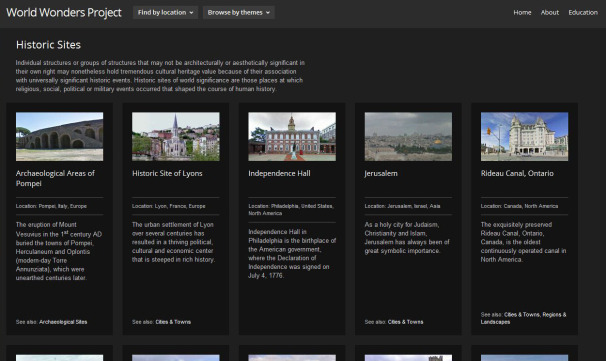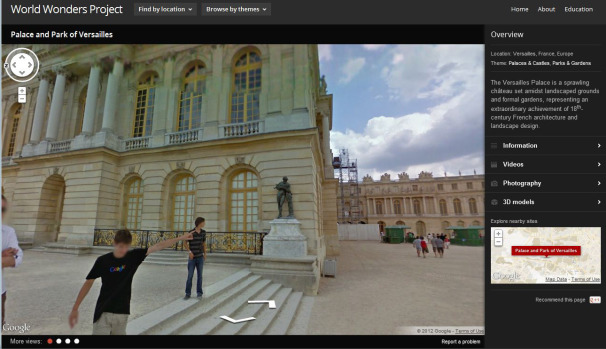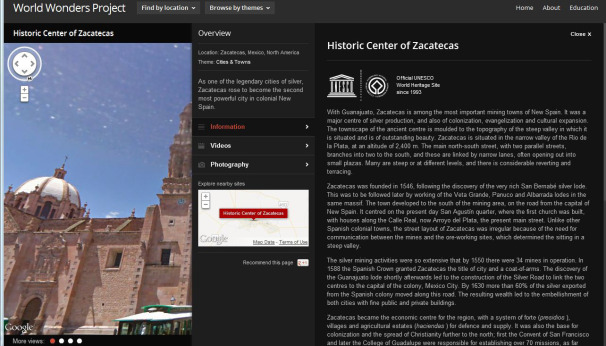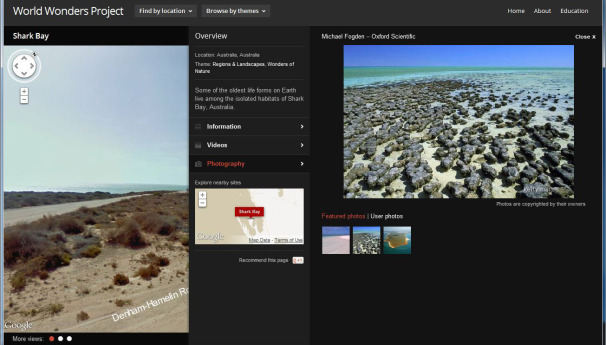Google releases the first edition of the World Wonders Project on Thursday, May 31, an innovative website that allows us to “visit” ancient and culturally important locations around the globe up close and personal.
Google’s street view has proven itself to be an important tool for those of us curious about the world outside of their own neighborhoods. Since its initial launch over 5 years ago, the service have been able to travel the world visually mapping roads, railways, parks, airports, malls and even parts of remote locations like the Amazon basin.
Now the powerhouse internet empire has given us yet another reason not to venture past the confines of our computer screens with the introduction of their newest feature: the World Wonders Project.
Officially launched on May 31, 2012 in a post on Google’s official company blog, the World Wonders Project gives us 132 ancient and culturally important locations spanning across 18 unique countries. The World Wonders Project uses a “Street View” technology to let viewers get an up close and personally view of the different sites, which include the UK’s Stonehenge, archaeological areas of Pompeii in Italy, ancient temples in Japan’s former capital, Kyoto, Shark Bay in Australia, Yosemite National Park and the palace at Versailles.
There are also some great little extra features that come with Google’s newest project. Its Stonehenge pictures, for example, take you right in among the stones — something you can’t even do if you visit in person, as a rope cordon around the ancient monument has been in place for the last 35 years. In addition to taking a ground-level tour of a site, you can display information about it with a click.
“Most could not be filmed by car, so we used camera-carrying trikes to pedal our way close enough,” Melanie Blaschke, product marketing manager of the World Wonders project, explained in the blog post.
On some of the more well known locations, you’re also able to get a look at 3D models of the location, watch YouTube videos about it and see additional professional photographs, some of them gleaned from sources such as Getty Images and Ourplace.
World Wonders was developed under the auspices of the Google Cultural Institute, which, in the past, has brought to the Internet such amazing treasures as the Dead Sea Scrolls and the archives of Nelson Mandela.
“We also partnered with several prestigious organizations, including UNESCO, the World Monuments Fund, Getty Images and Ourplace, who provided official information and photographs for many of the sites,” Blaschke wrote, adding “World Wonders is part of our commitment to preserving culture online and making it accessible to everyone.”
Google hopes World Wonders will prove particularly popular with students and scholars, and has even put together a number of educational packages for use in the classroom.
So if you feel like enjoying some of the world’s ancient sites without actually having to physically travel to them, or if time and money are a bit on the tight side just now, the World Wonders Project could be well worth checking out.







